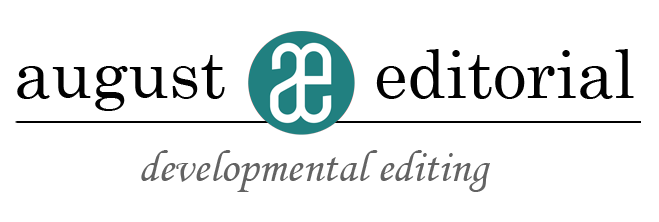Sometimes considered a subset of developmental editing, substantive editing is an intensive process by which the editor critiques the manuscript, offering major and minor qualitative suggestions while taking care not to alter the writer’s original voice or intent. The editor may critique style, content, plot, or any number of literary elements.
Examples of substantive editing:
- suggestions on character development, narrative arc, plot, setting, and more
- advice on how to deepen your descriptive writing
- flagging sections that need to be rewritten, removed, or replaced
- making judgements about word choice
Unlike proofreading and copy-editing, which are primarily concerned with the rules of language, substantive editing is qualitative editing – suggestions on how to improve a manuscript from a literary, stylistic and structural perspective.
Because of this, developmental and substantive editing usually involve an extensive exchange between author and editor as the author responds to the editor’s suggestions. Communication is vital, particularly when it comes to the delicate task of editing an author’s work. The editor must seek to improve – not cripple – the promising manuscript.
All editorial suggestions are made using “Track Changes”, which allow the author to quickly and easily review the editing notes. No alterations are made to the manuscript without the author’s knowledge and approval.
For more on the editing process, please see How the Process Works.
Detailed critiques
August Editorial is famous for creating complete chapter-by-chapter outlines that evaluate narrative arc and character development. These outlines also include a broad overview of themes presented in the story and where they occur, and can be tailored to focus on any literary element that you wish to have improved. Such detailed critiques are invaluable in the process of bringing your story fully to life.Contact me for examples of organizational and narrative critiques that I've provided for my clients (all privacy is protected).
For more information on the editing process, see How the Process Works.
For prices, see Editing and Proofreading Prices.
Developmental editing is the most intensive type of editing. This is requested when the author or publisher requires significant rewriting, and can include revisions to the entire structural hierarchy of a manuscript, including reordering chapters and making suggestions for new chapter content. Pieces of chapters might be rearranged to promote flow and clarity of ideas.
The developmental editor is primarily concerned with how the manuscript presents itself to its intended audience. Is it written with their needs in mind? Does it flow logically from one idea to the next? Is it understandable to the target audience?
Most of the projects I work with in a developmental capacity are largely complete, but developmental editing can also include concept development. This entails helping an author conceive of an idea for a new book (either fiction or non-fiction) and set about putting together the organizational backbone of the manuscript. In this case the editing process may be quite involved, with the editor reading and making suggestions on several drafts of the manuscript as it is written.
Examples of developmental editing:
While the developmental editor is employed to improve the clarity and quality of the piece, ultimately the authors have the final say in whether or not to adopt the changes that the editor suggests.




